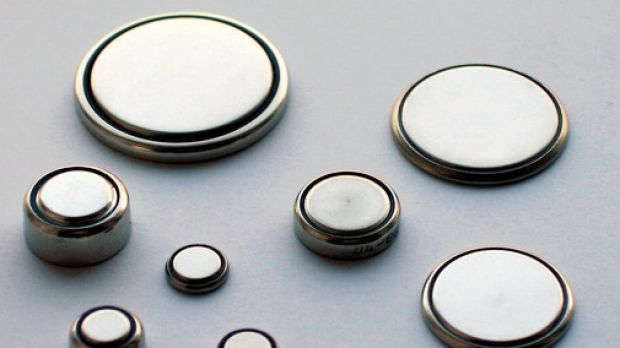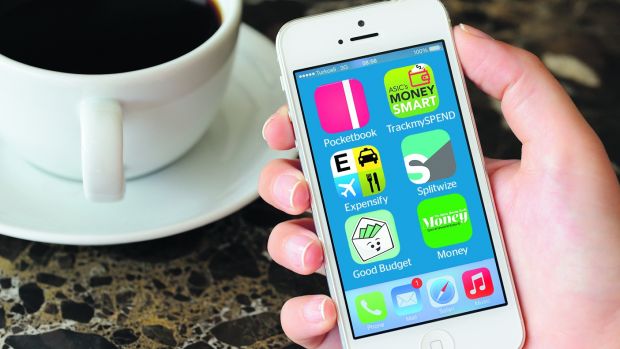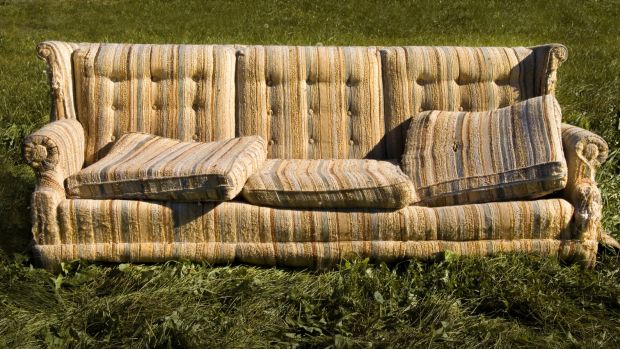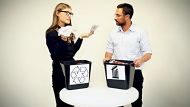Take a look around a typical Australian home in 2016. Smartphones, remote controls, power tools, toys – in every room there is a battery close by.
More News Videos
Taking the guesswork out of recycling
Fairfax's Lucy Cormack puts her fellow staff to the test, to see if they can sort out the recycling.
By 2020, the average Australian is expected to consume more than 20 handheld batteries every year.
E-waste and mobile phones continue to end up in the wrong waste stream, with estimates suggesting there are at least 25.5 million unused mobile handsets around Australia.

Meanwhile, 5 million litres of paint ends up in Australian landfill every year, along with the packaging and materials that go with it.
John Gertsakis, chief sustainability officer at supply chain provider Infoactiv, said better managing the waste of Australian consumers "is not rocket science" but it will take innovation.
"Australians are great recyclers but they need a program or solution in place."
Five things you should not be putting in the wheelie bin - and how to get rid of them
Batteries

Far too many batteries are tossed in the general rubbish. Photo: Domino Postiglione
"Right now the most common disposable pathway for batteries is the wheelie bin," Mr Gertsakis said.
Australians recycle less than 3 per cent of household batteries, despite the fact that 90 per cent of battery materials can be recovered. About 12,000 tonnes of batteries end up in landfill every year.
Successful mandatory recycling schemes have existed around the world since 2006, but Mr Gertsakis said Australia is lagging "because we didn't regulate 10, 15 years ago".
He said well-known battery brands were operating in overseas markets with product stewardship schemes, but were not harmonising their environmental programs in Australia.
Australian Battery Recycling Initiative chief executive Dr Helen Lewis said typically, Australia has not seen strong leadership from brand owners.
"What we've learnt from packaging waste, is that when you put in a convenient system for consumers, they will use it."
ABRI is working with government and industry to develop a network across retail stores, supermarkets, hardware specialist stores and other public places.
Mobile phones and accessories

Mobile phone e-waste can be transformed into valuable metal alloys. Photo: Jo Simpson
"We want people to start thinking about the environmental benefits of recycling their old mobiles," said Spyro Kalos, Mobile Muster recycling manager.
Mobile Muster is a not-for-profit government accredited program supported by most phone retailers. It has recycled 9.95 million phone handsets since 1998.
Mr Kalos said mobile phones should be thought of as a "miniature mine," as 95 per cent of the materials can be recovered to avoid landfill.
Mobile Muster has more than 3500 recycling points around Australia, where it accepts handsets, batteries, chargers, accessories and USB devices.
Paint

Paint is collected by councils to be disposed of correctly. Photo: Stocksy
Australians buy more than 100 million litres of paint each year, of which 5 per cent ends up in landfill each year.
Melbourne painter Damian Ryan still hears of painters who pour leftover paint down drains or into holes in the ground.
As the vice-president of the Victorian and Tasmanian Master Painters Association, Mr Ryan is working to re-educate the industry about the safe disposal of leftover paint and packaging waste, through a scheme known as Paintback.
The scheme, for DIY painters and trade painters, applies a user-pays 15¢ per litre levy on eligible products of leading paint brands in Australia and has 16 paint-specific collection points around Australia.
For standard household paint waste there are local government run collection schemes.
IT and e-waste

Electronic waste is growing at a rapid rate. Photo: Ken Merrigan
Electronic waste in Australia is growing at three times the rate of general household waste, while the appetite for gadgets grows.
Mr Gertsakis said "products today have become disposable, because of their proliferation".
"Anything with a plug" is not made for the traditional household waste stream, he said.
The City of Sydney operates a disposal site in St Peters, which accepts all e-waste.
Furniture and whitegoods

You need to arrange pick-up for household furniture with your local council.
Believe it or not, furniture and whitegoods should not be broken up and put in kerbside bins.
Leaving them on the street is not a good alternative either, as you can be fined up to $2200 in some areas.
Check with your local council to arrange a pick-up of unwanted items.
Free options for household problem waste recycling and other information on disposal locations can be found on the EPA website: http://epa.nsw.gov.au/managewaste/house-problem.htm









